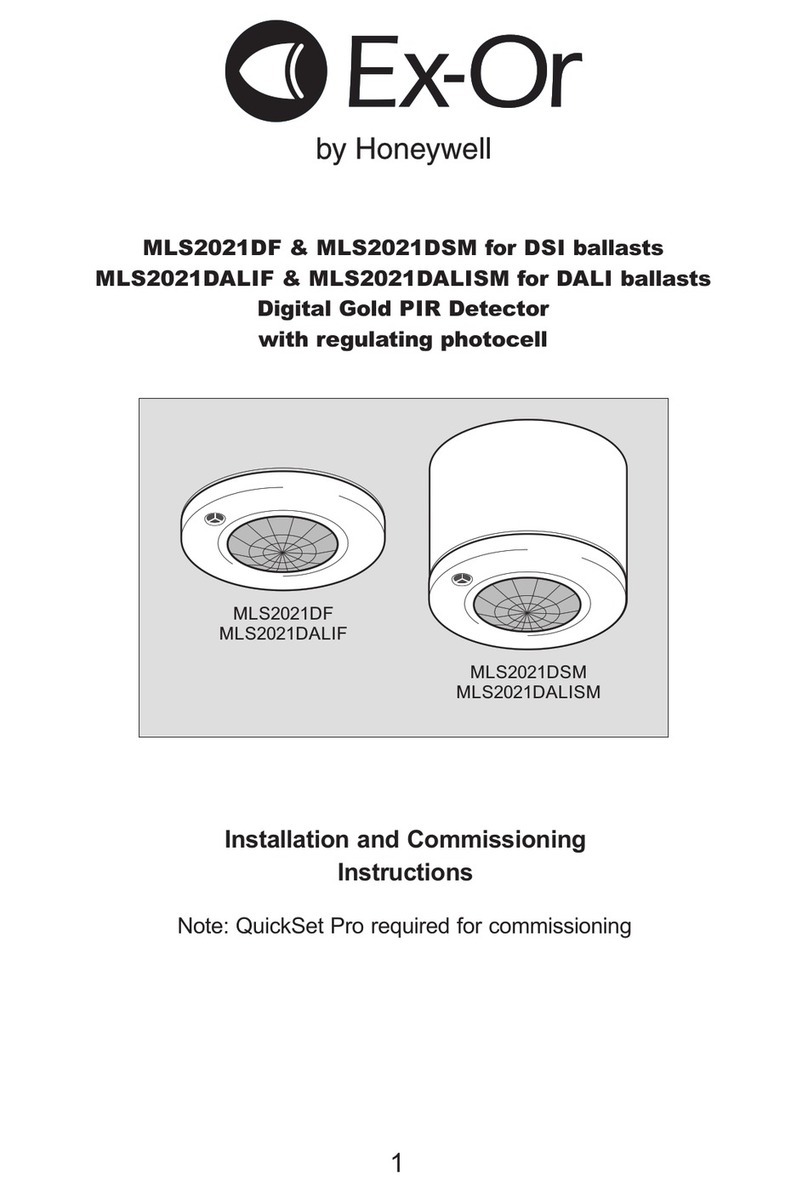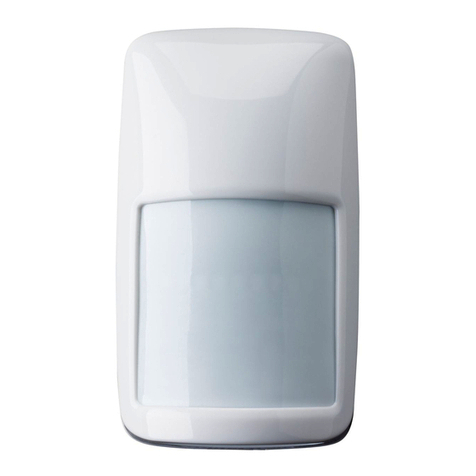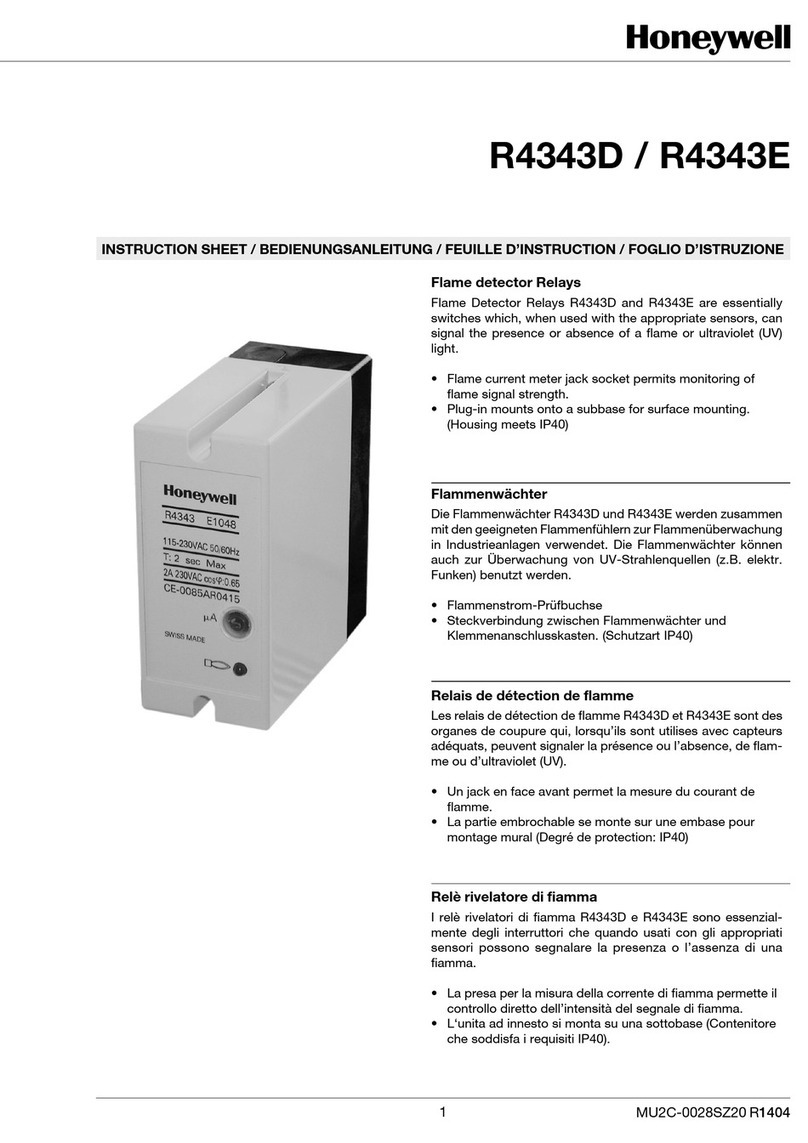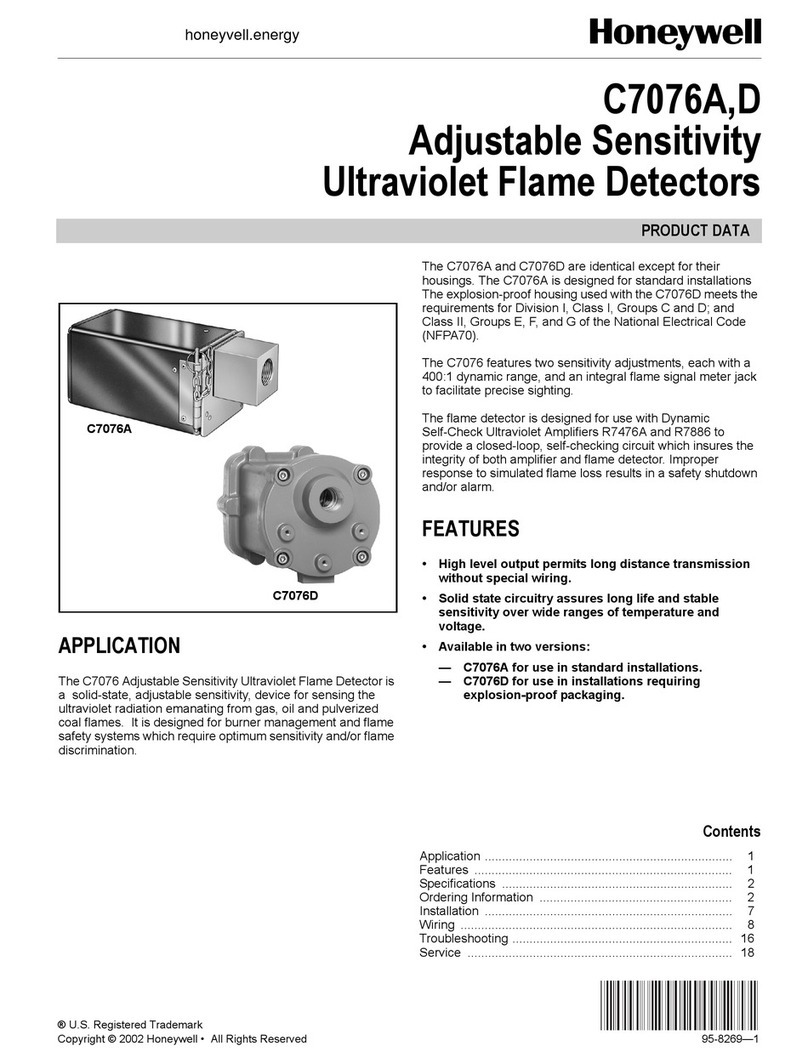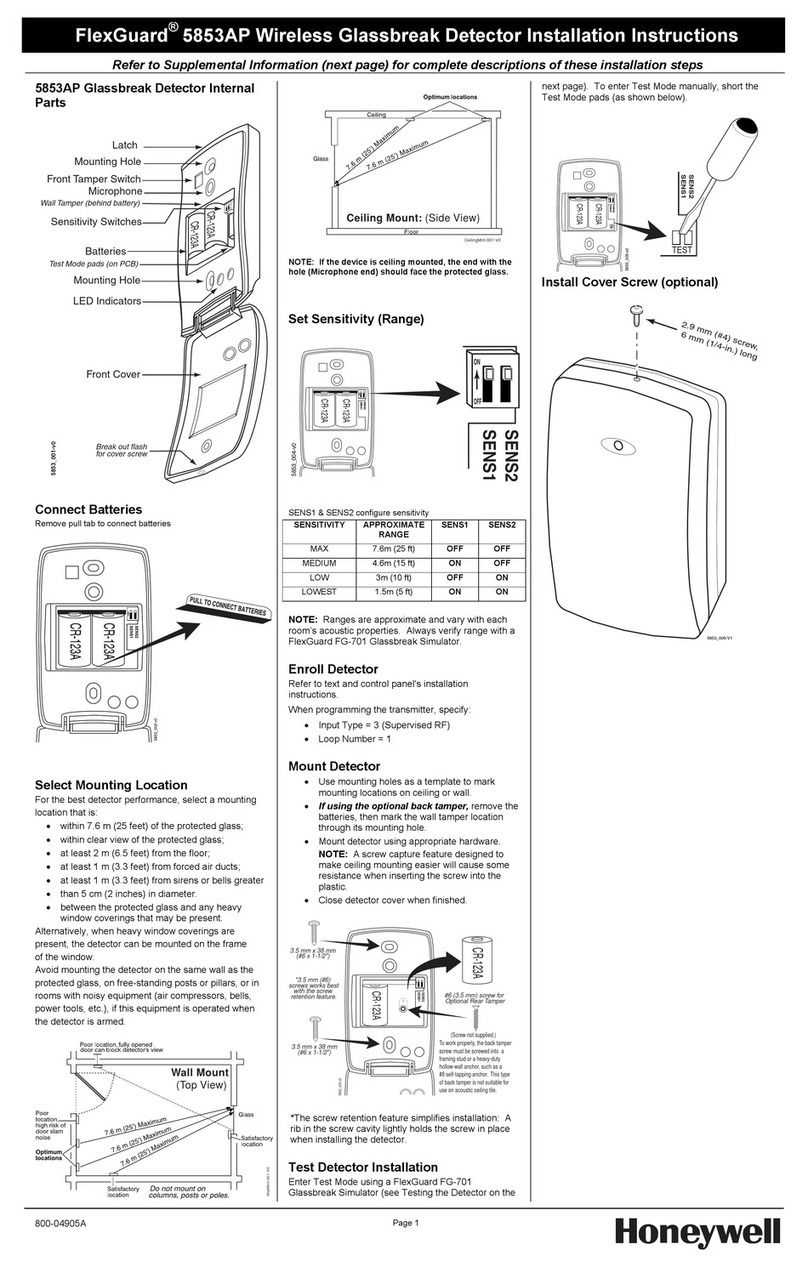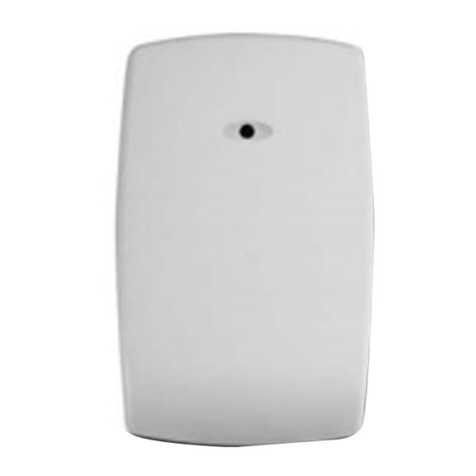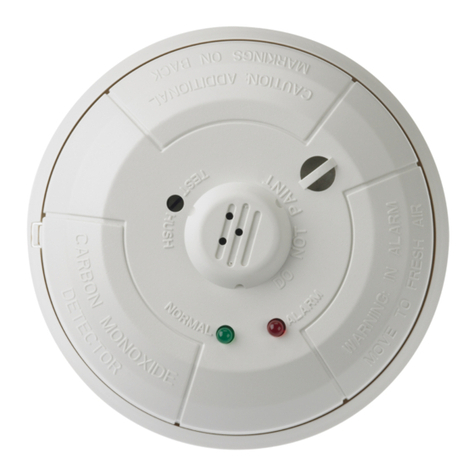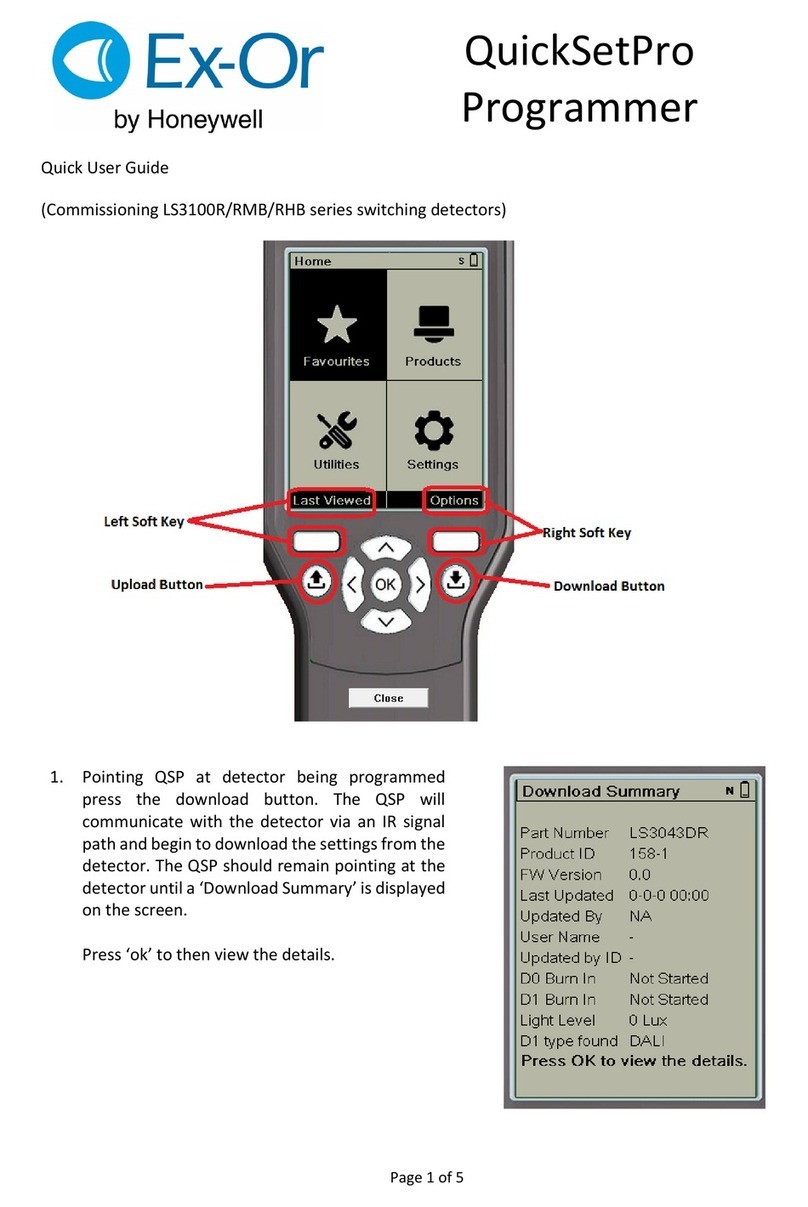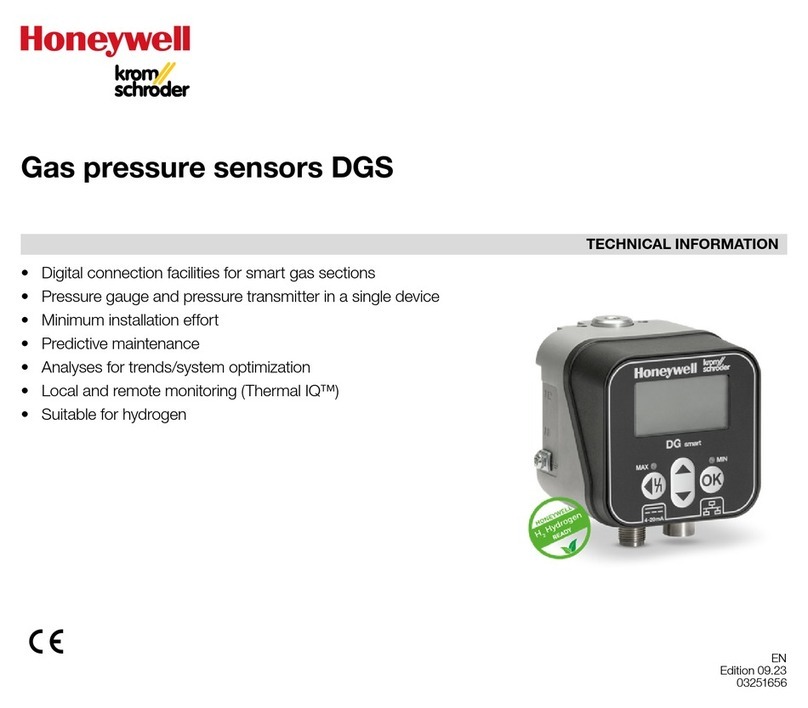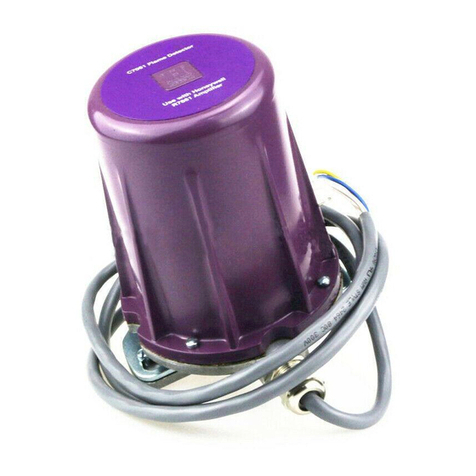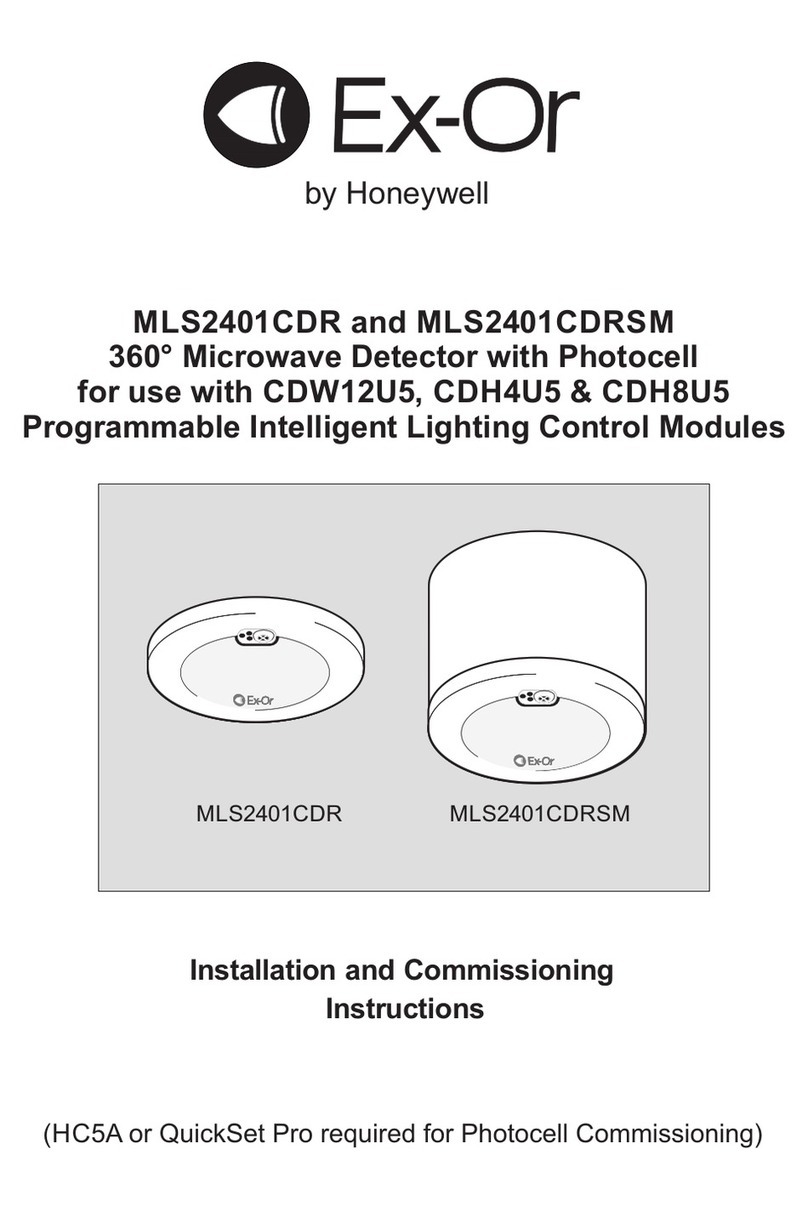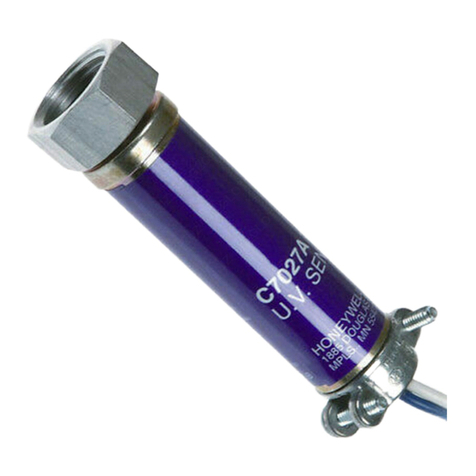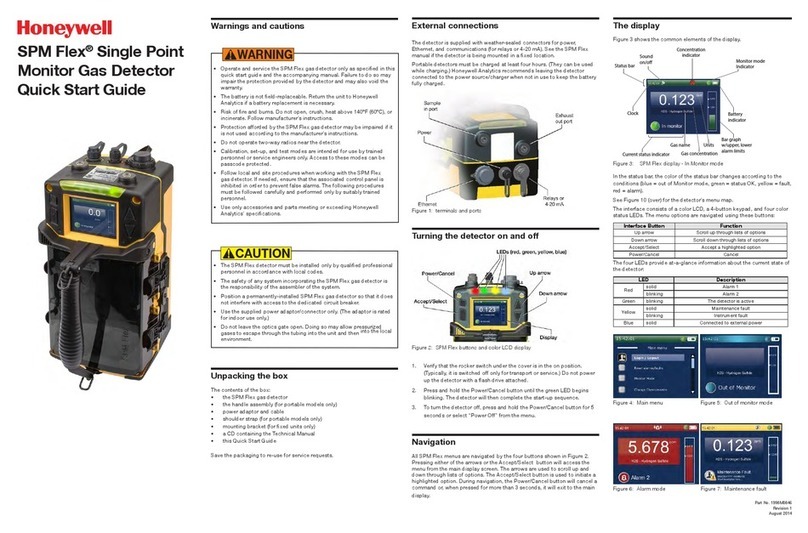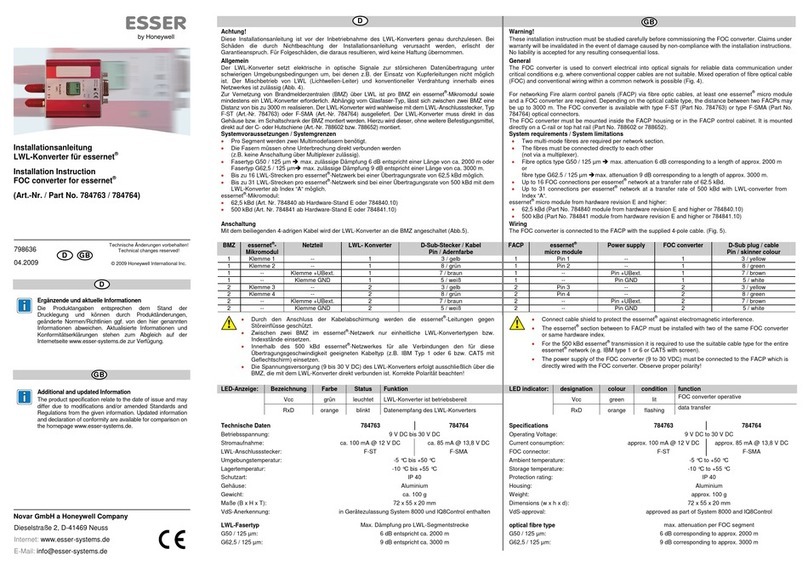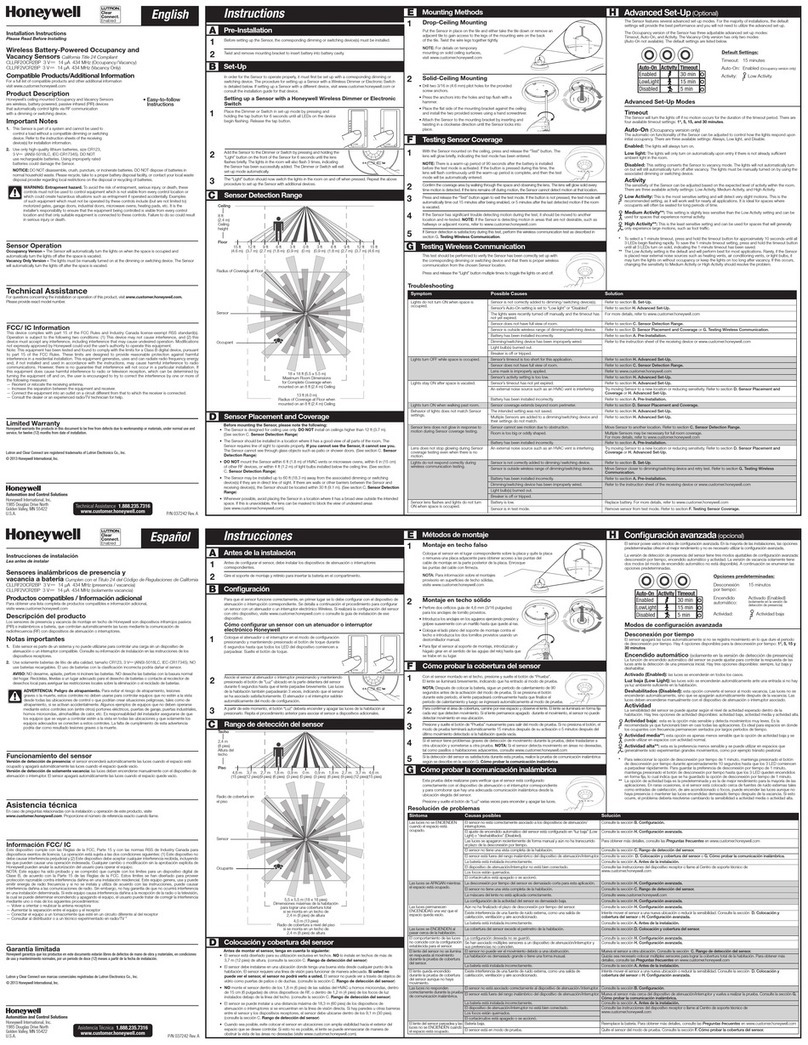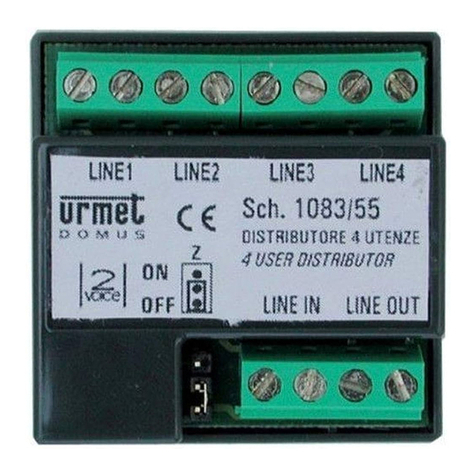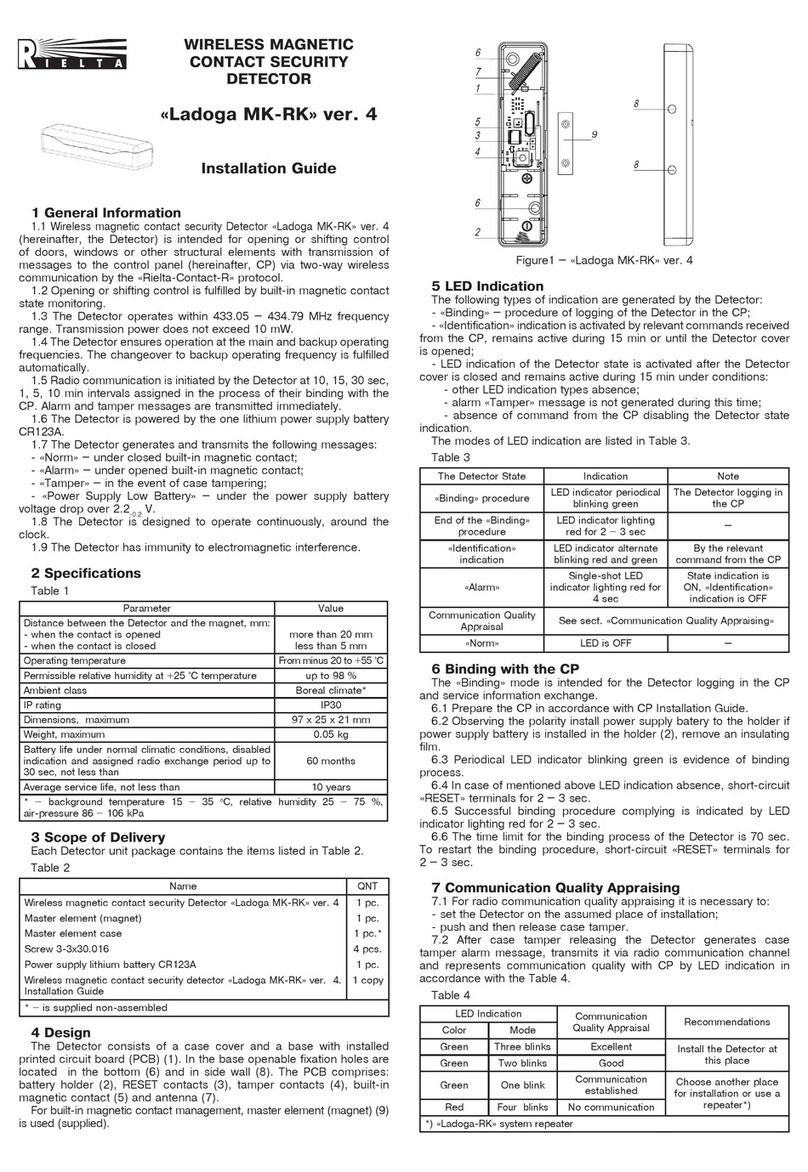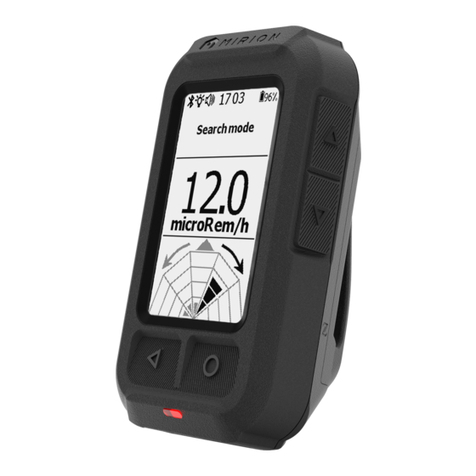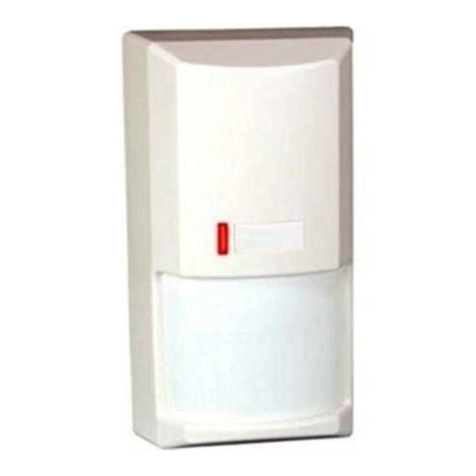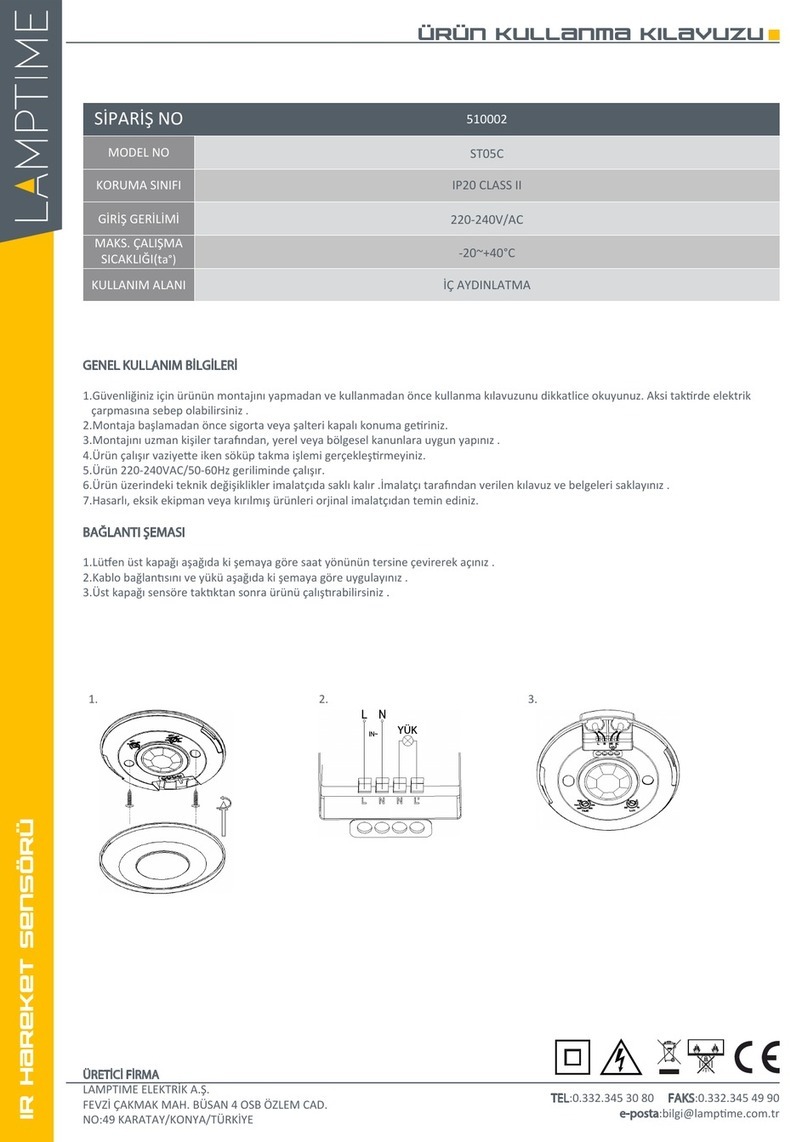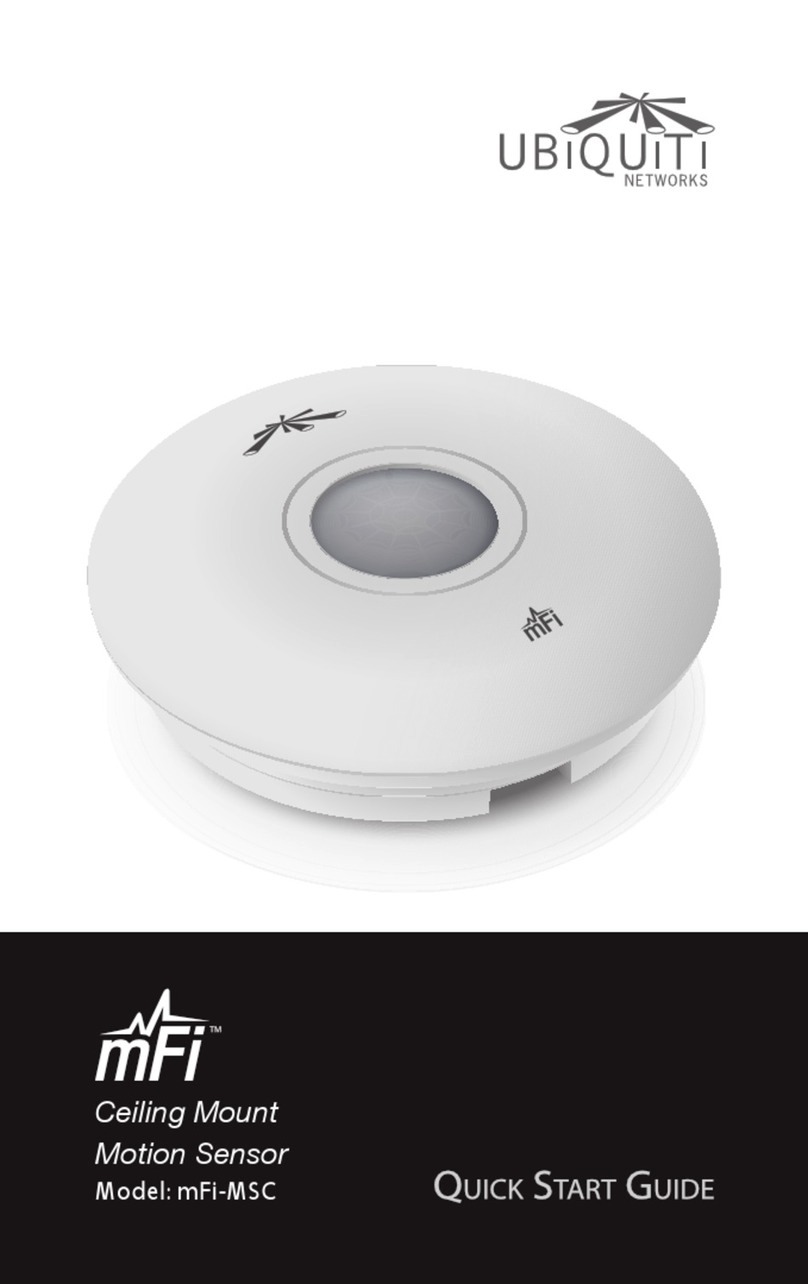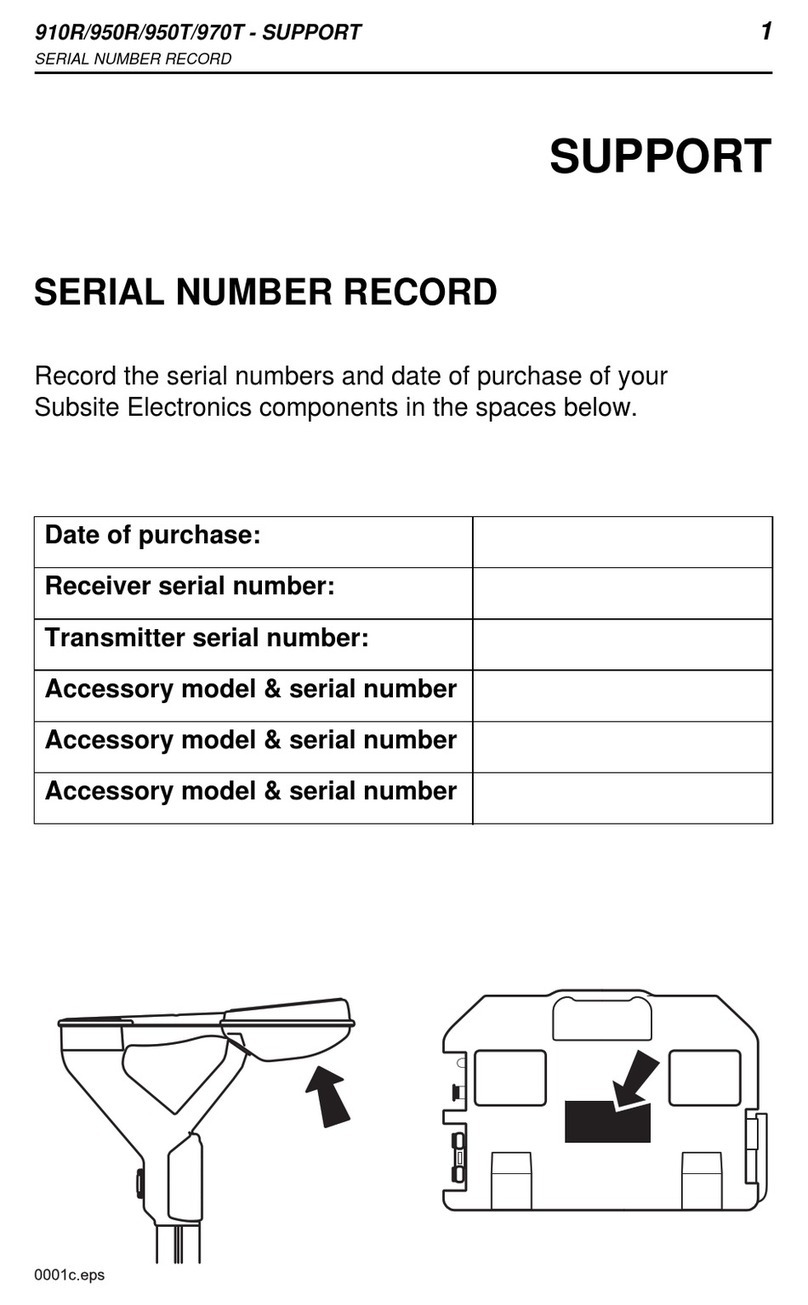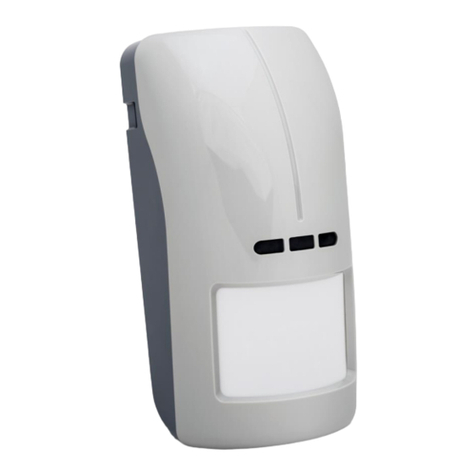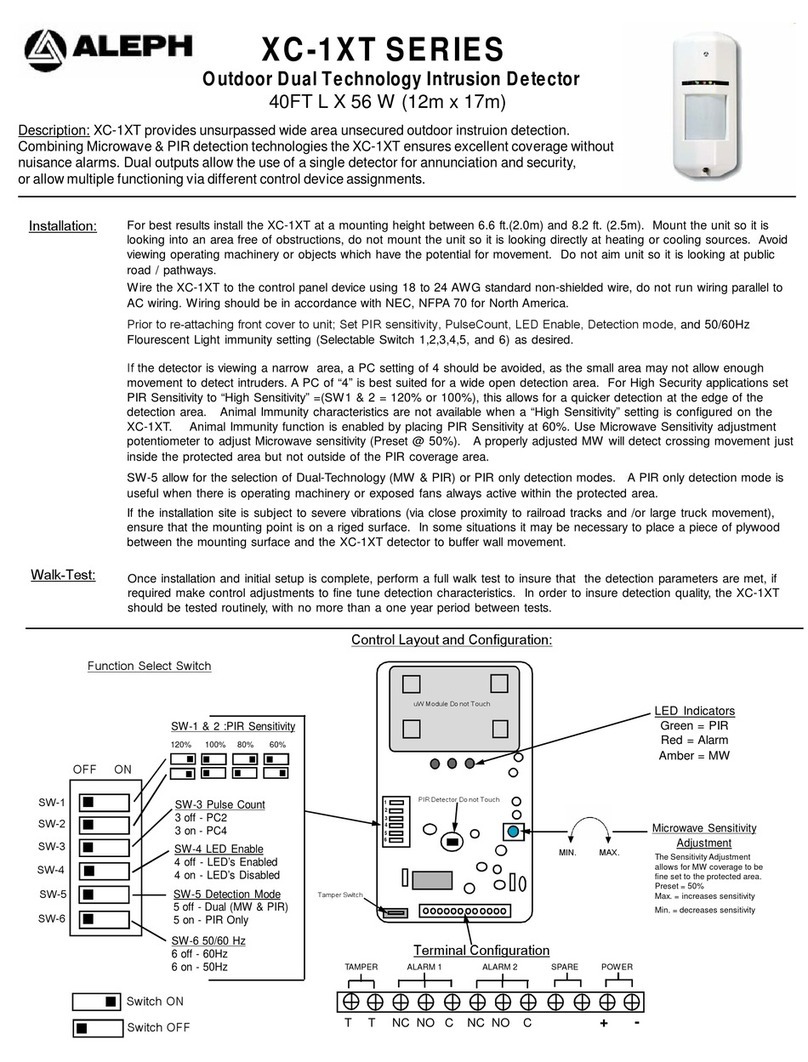
Notifier®and FlashScan®are registered trademarks of Honeywell International, Inc.
TESTING
Before testing, notify the proper authorities that the system is undergoing
maintenance, and will temporarily be out of service. Disable the system to
prevent unwanted alarms.
All sensors must be tested after installation and periodically thereafter. Testing
methods must satisfy the Authority Having Jurisdiction (AHJ).
The sensor can be tested in the following ways:
A. Functional: Magnet Test (P/N M02-09-00)
This sensor can be functionally tested with a test magnet. The test magnet
electronically simulates smoke in the sensing chamber, testing the sensor
electronics and connections to the control panel.
1. Hold the test magnet in the magnet test area as shown in Figure 3.
2. The sensor should alarm the panel.
Two LEDs on the sensor are controlled by the panel to indicate sensor
status. Coded signals, transmitted from the panel, can cause the LEDs to
blink, latch on, or latch off. Refer to the control panel technical documen-
tation for sensor LED status operation and expected delay to alarm.
B. Smoke Entry
Sensitivity readings are available through the FACP. Refer to the manufac-
turer’s published instructions for proper use.
Additionally, canned aerosol simulated smoke (canned smoke agent) may
be used for smoke entry testing of the smoke detector.
When used properly, the canned smoke agent will cause the smoke detec-
tor to go into alarm. Refer to the manufacturer’s published instructions for
proper use of the canned smoke agent.
Canned aerosol simulated smoke (canned smoke agent) formulas will vary by
manufacturer. Misuse or overuse of these products may have long term ad-
verse effects on the smoke detector. Consult the canned smoke agent manufac-
turer’s published instructions for any further warnings or caution statements.
C. Direct Heat Method (Hair dryer of 1000-1500 watts).
A hair dryer of 1000-1500 watts should be used to test the thermistors. Di-
rect the heat toward either of the two thermistors, holding the heat source
approximately 30 cm from the detector in order to avoid damaging the
plastic housing. The detector will reset only after it has had sufficient time
to cool. Make sure both thermistors are tested individually.
A sensor that fails any of these tests may need to be cleaned as described
under CLEANING, and retested.
When testing is complete, restore the system to normal operation and notify
the proper authorities that the system is back in operation.
CLEANING
Before removing the detector, notify the proper authorities that the smoke
detector system is undergoing maintenance and will be temporarily out of
service. Disable the zone or system undergoing maintenance to prevent un-
wanted alarms.
1. Remove the sensor to be cleaned from the system.
2. Remove the sensor cover by pressing firmly on each of the four removal
tabs that hold the cover in place.
3. Vacuum the screen carefully without removing it. If further cleaning is
required continue with Step 4, otherwise skip to Step 7.
4. Remove the chamber cover/screen assembly by pulling it straight out.
5. Use a vacuum cleaner or compressed air to remove dust and debris from
the sensing chamber.
6. Reinstall the chamber cover/screen assembly by sliding the edge over the
sensing chamber. Turn until it is firmly in place.
7. Replace the cover using the LEDs to align the cover and then gently push-
ing it until it locks into place. Make sure that the thermistors do not be-
come bent under the cover.
8. Reinstall the detector.
9. Test the detector as described in TESTING.
10. Reconnect disabled circuits.
11. Notify the proper authorities that the system is back on line.
Note: Dispose of electronic waste according to national and local regulations
when scrapping or replacing a device. Do not discard as general trash.
SPECIAL NOTE REGARDING SMOKE DETECTOR GUARDS
Smoke detectors are not to be used with detector guards unless the combina-
tion has been evaluated and found suitable for that purpose.
FIGURE 3. FEATURES OF THE PHOTO/HEAT DETECTOR
Magnet
Test
Marker
LED
Base
Notch
Magnet Test Marker LED
Base Alignment Notch
C2023-00
FIGURE 4. CLEANING THE PHOTO/HEAT DETECTOR
Cover Removal
Tabs
Sensor Cover
Sensing Chamber
Cover and Screen
Sensing Chamber
ThermistorThermistor
}
C2024-00
ON-SITE SENSITIVITY ADJUSTMENT
The sensitivity for this device is set at FDCIE.
For the AFP-3030 panel, alarm sensitivity levels 1-9 meet the sensitivity level
requirement of the AS 7240.7 standard.
For more information on sensitivity settings refer to the manufacturer's Fire
Alarm Control Panel manual.
Australian
Standard
Lic. SMKH25312
SAI-Global
DEVICE AND SYSTEM SECURITY
Before installing this product ensure that the
tamper seal on the packaging is present and
unbroken and the product has not been tampered
with since leaving the factory. Do not install this
product if there are any indications of tampering.
If there are any signs of tampering the product
should be returned to the point of purchase.
It is the responsibility of the system owner to
ensure that all system components, i.e. devices,
panels, wiring etc., are adequately protected to
avoid tampering of the system that could result
in information disclosure, spoofing, and integrity
violation.
2I56-7362-000
Ver. A
